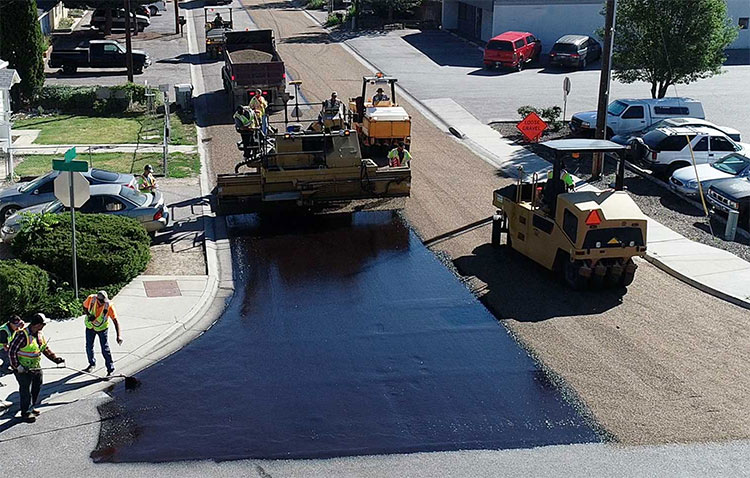News and Press Releases Wednesday, May 26, 2021
How Does ACHD Chip Seal?
Earlier this week, we covered the "why" behind chip sealing. We shared information about the importance of this proactive maintenance operation and its significant cost savings to our taxpayers.
But how does it work? Let's start at the beginning. First, a filler is applied to cracks to prevent water from seeping to the base. The road is then swept to remove all debris and prepare the surface for chip seal. The chip seal crew then begins operations. A distributor truck begins by laying down oil followed by a spreader box to drop down chips.

The size of the chips for residential streets is 1/4" and arterials and collectors are 3/8". The size difference accommodates higher traffic volumes and heavier vehicles on the collectors and arterials versus the residentials roads. Pneumatic rollers will then roll over the chips, the goal is to get the chips pushed into the emulsion as densely as possible. You actually assist with this part! Once the chips are laid, local traffic will further push them down as the emulsion hardens over the following weeks.
Once hard, sweepers will then sweep the streets to collect any loose chips before applying a fog seal. This seal is the final stage of setting and protecting the chips. At this stage, you will notice the road will take on a smooth and dark appearance, as we have come to expect. Our paint crews are next up in the process. Working with a blank canvas, they restripe the arterials and collectors, putting the finishing touches on this annual process.